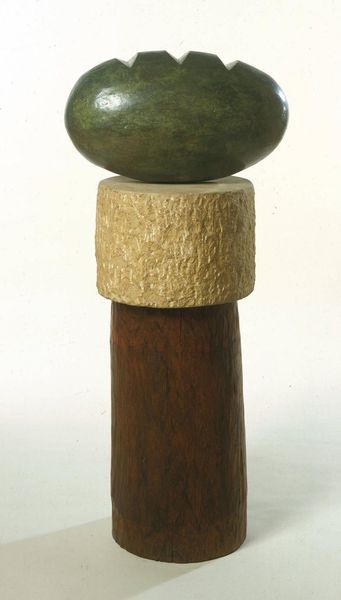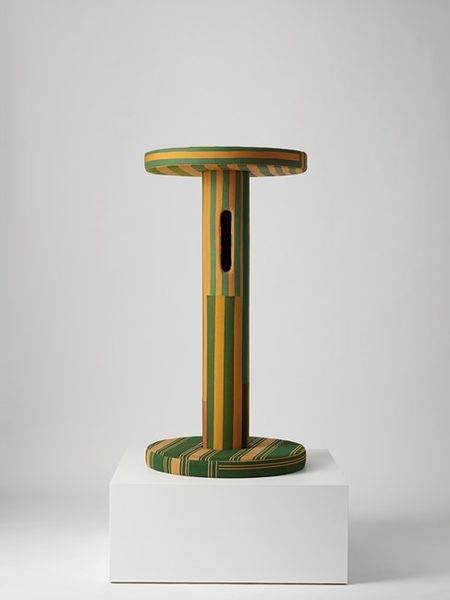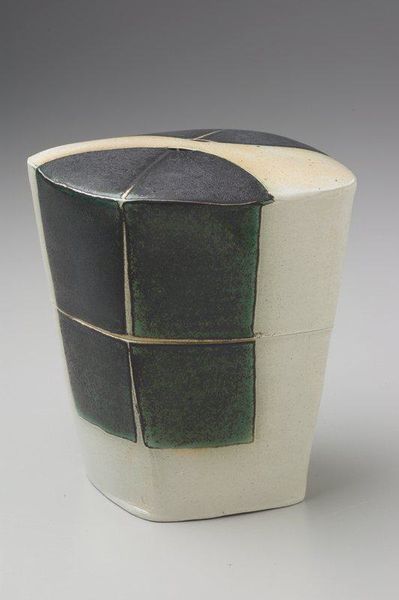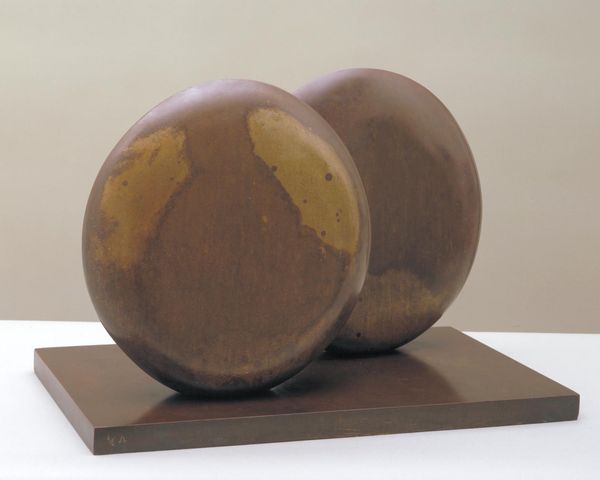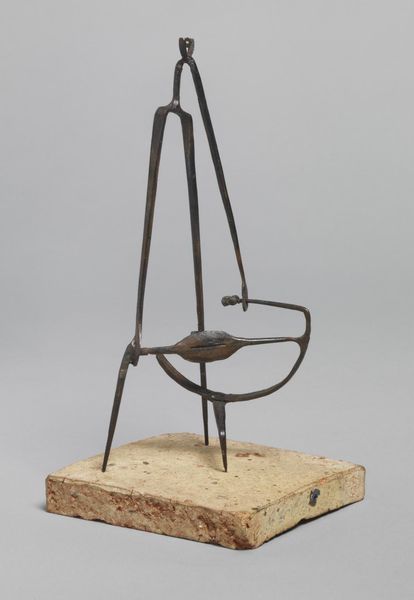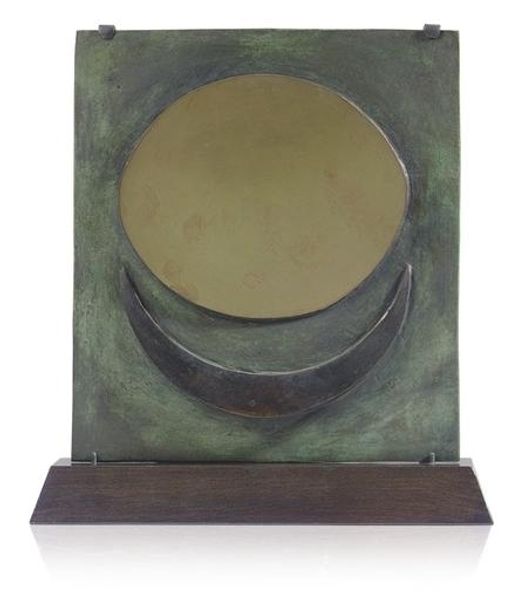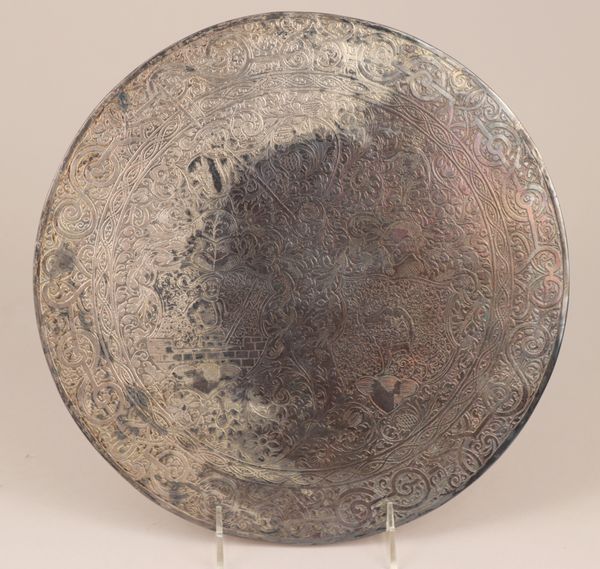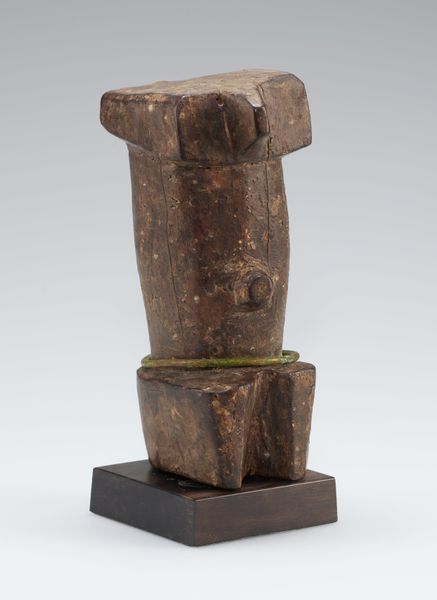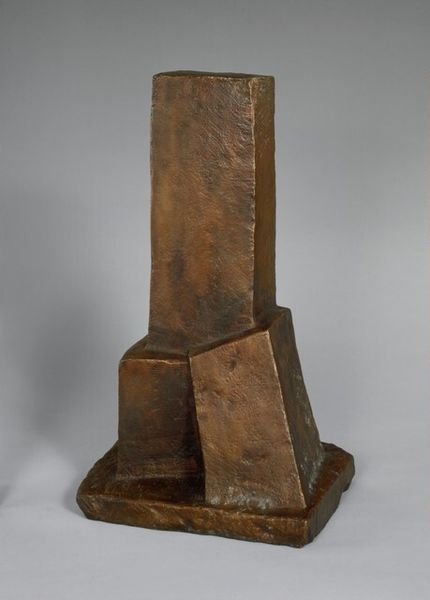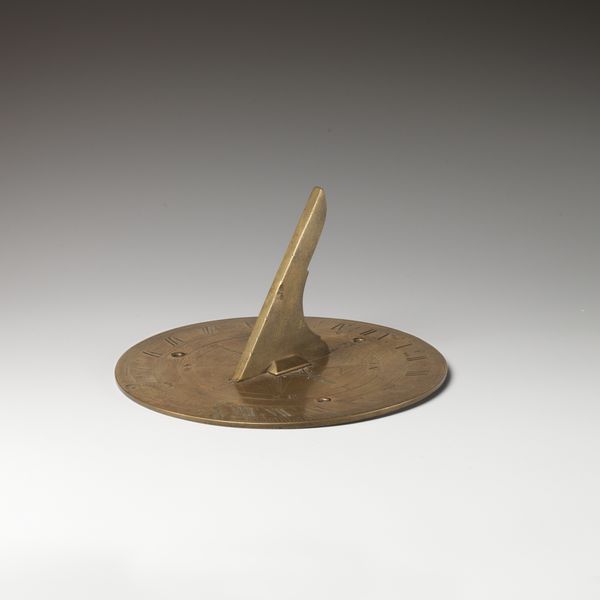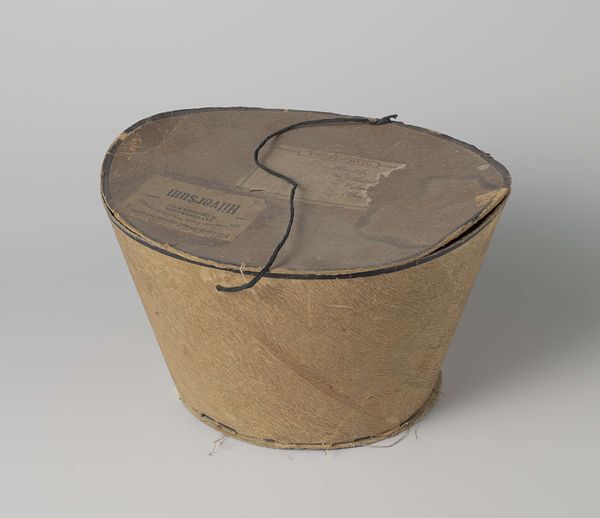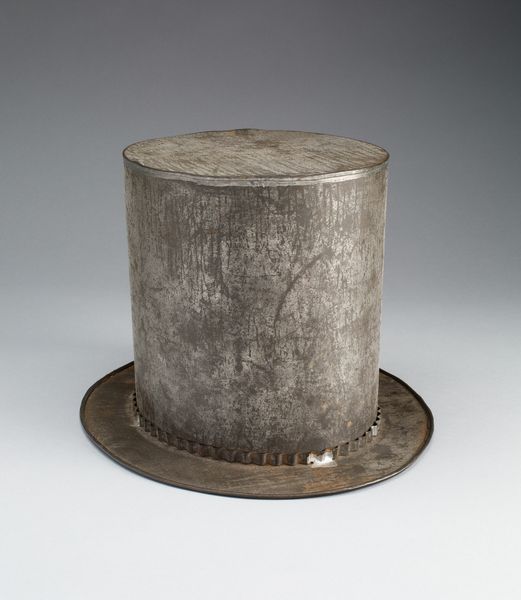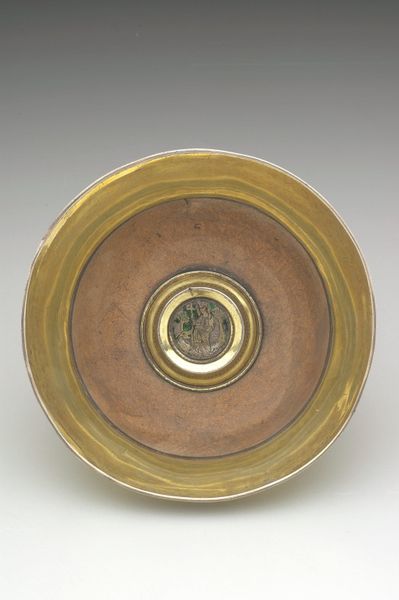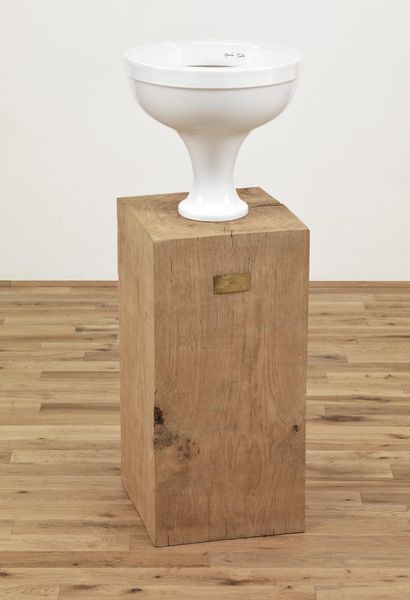
mixed-media, assemblage, found-object, sculpture
#
mixed-media
#
contemporary
#
assemblage
#
found-object
#
form
#
geometric
#
sculpture
#
pop-art
#
modernism
Dimensions: overall: 149.8 × 73.7 × 53.3 cm (59 × 29 × 21 in.) gross weight: 34.02 kg (75 lb.)
Copyright: National Gallery of Art: CC0 1.0
Curator: Here we have H.C. Westermann's intriguing piece, "The Plush," created between 1963 and 1964. It’s an assemblage sculpture that really defies easy categorization. What are your first impressions? Editor: My first reaction is... uncanny. The juxtaposition of the textures, that nubby-like circle on top with the shaggy base. It is at once intriguing and a little off-putting. Like something familiar turned just slightly alien. Curator: It's precisely that disruption of the familiar that makes Westermann so compelling. Let’s think about the social and cultural context: This piece emerges during the rise of Pop Art, when artists were engaging with consumer culture and mass production, often with a critical edge. Do you see those dialogues taking place here? Editor: Absolutely. I read Westermann’s work through the lens of post-war anxiety and a sort of playful critique of the American dream. Consider, for example, the implied domesticity – "plush" evokes comfort, but then its rendered so strangely. The geometric formality clashing with these almost tactile materials. Curator: That's a key point: the formal, almost modernist abstraction undercut by the textures. Westermann served in World War II, and his experiences profoundly impacted his worldview. Some see his art as a commentary on the dehumanizing effects of war and the artificiality of postwar optimism. Editor: Yes, and to go a bit deeper, consider what "plush" traditionally signified. Luxury, comfort, status, right? Westermann seems to be asking us, what are the psychological costs of pursuing these values? Is there an underbelly to this promised comfort? Curator: The materials themselves contribute to this unsettling feeling. It is a mixed-media sculpture comprised of both found and constructed objects—inviting consideration into the way institutions validate value, in terms of class and material hierarchy. Westermann encourages critical thinking about what is considered "high" and "low" in the cultural landscape. Editor: Indeed. And the object, with its almost totemic presence, evokes a sense of ritualistic deconstruction of ideals—the geometric base appearing very intentionally set, as in a gallery space for veneration and, ultimately, criticism. The choice of these seemingly comforting textures, only further amplifies this effect. Curator: So, "The Plush" is far from just a whimsical object. It's a potent commentary on postwar society, material culture, and the complex relationship between comfort and anxiety. Editor: Right. Ultimately, Westermann is offering us a mirror, asking us to examine what we value and the narratives we construct around those values, which really gives the artwork a contemporary vitality that invites continual critical thought.
Comments
No comments
Be the first to comment and join the conversation on the ultimate creative platform.
